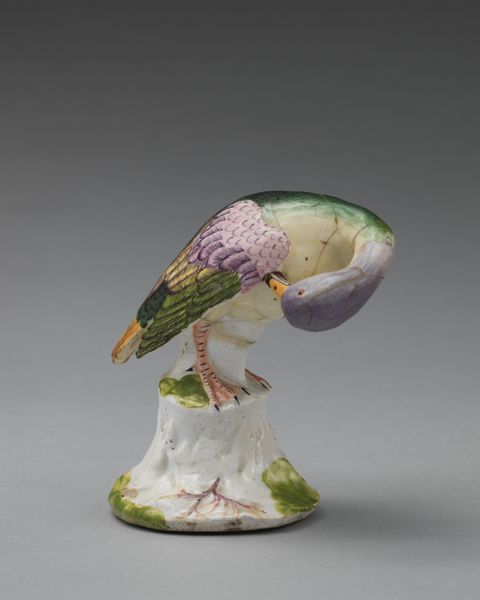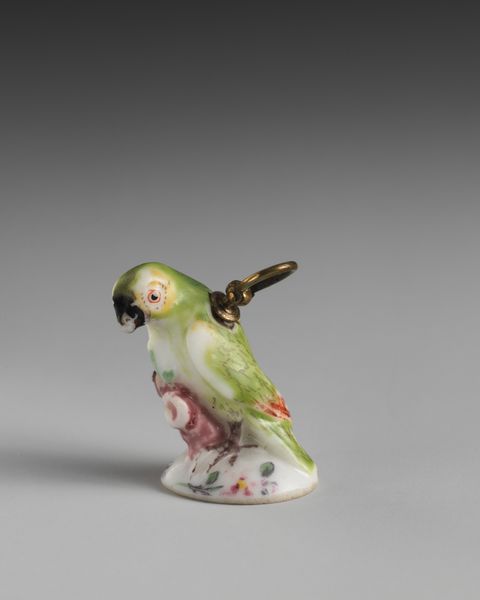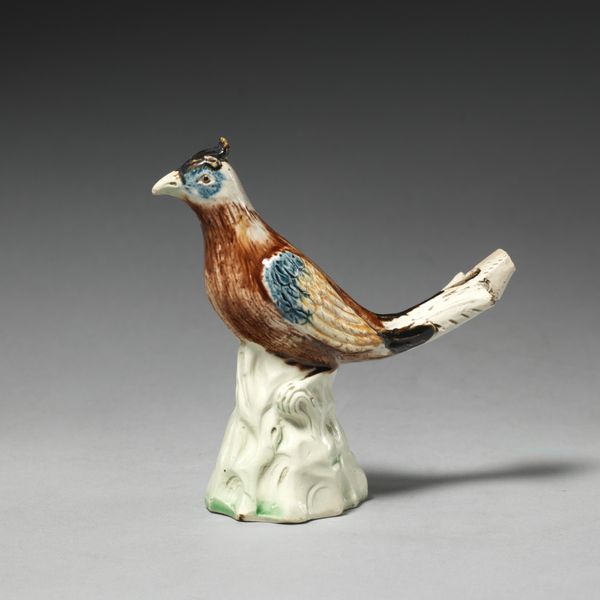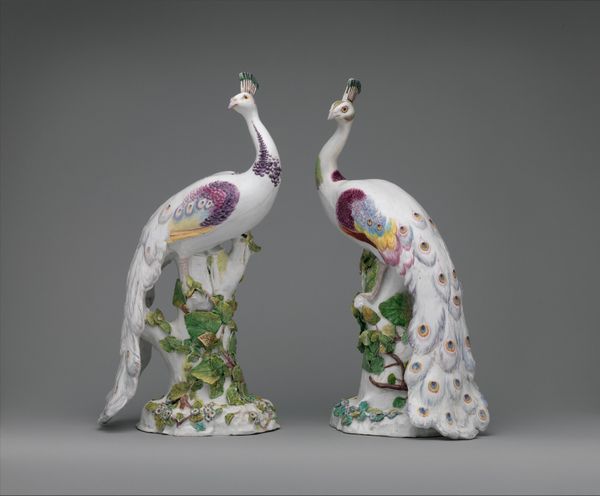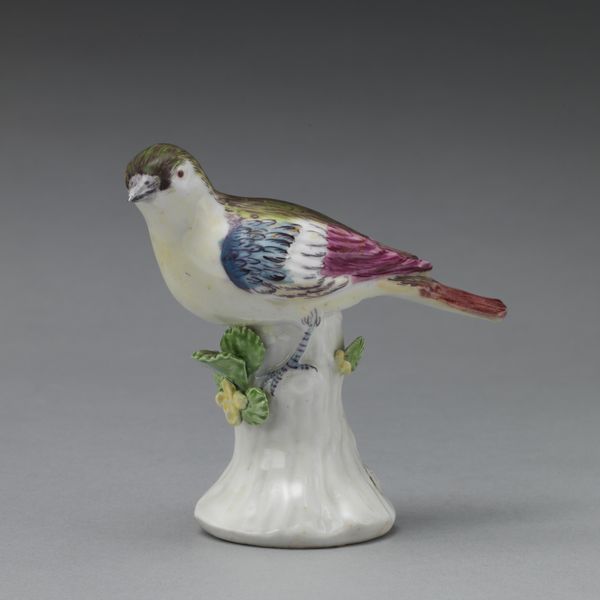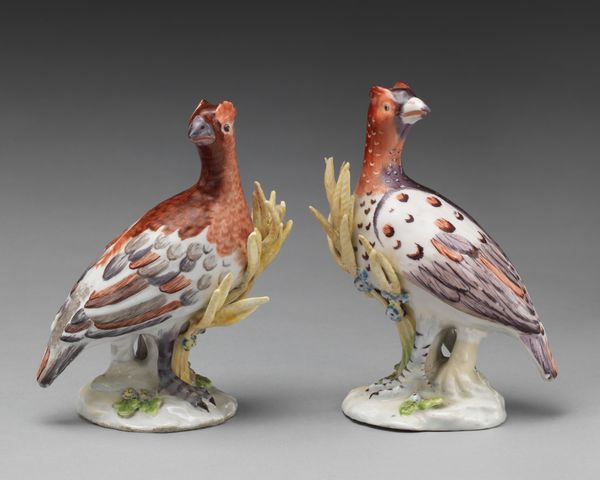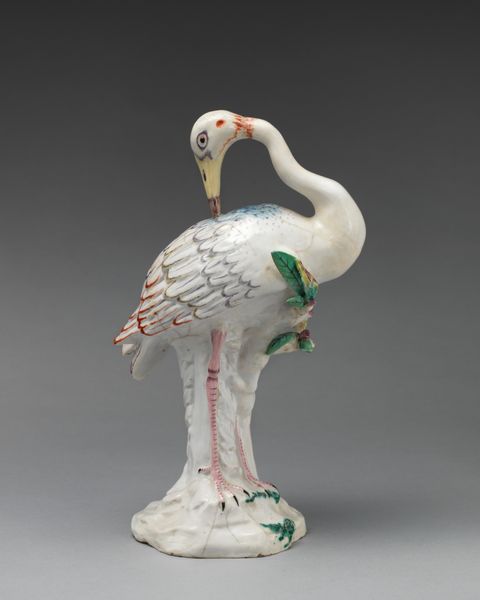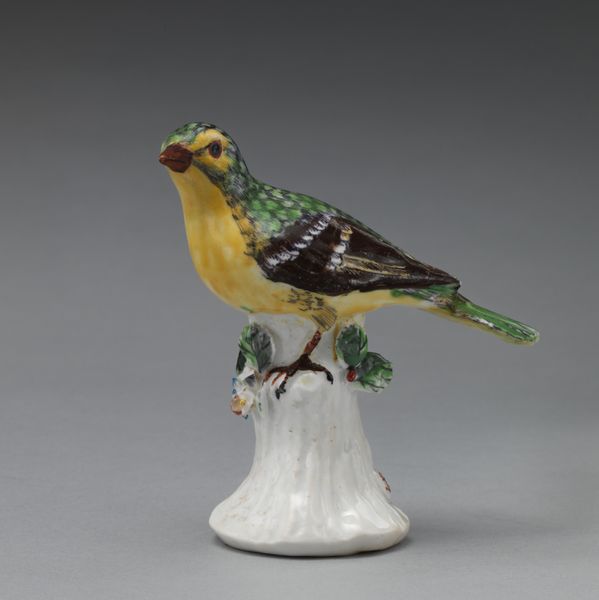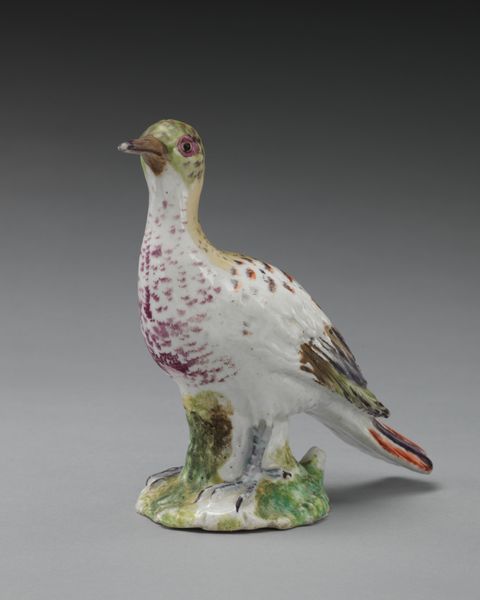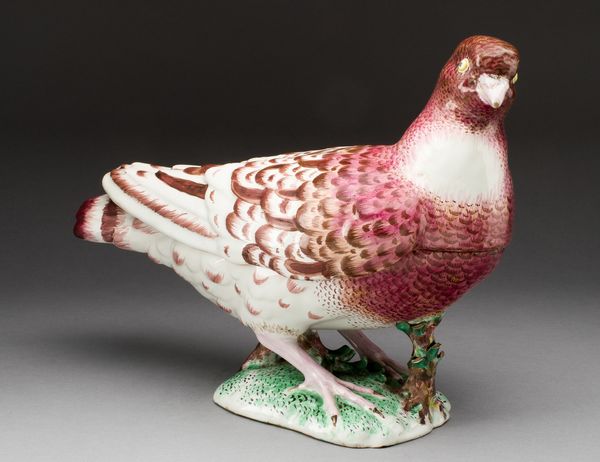
ceramic, porcelain, sculpture
#
animal
#
ceramic
#
porcelain
#
sculpture
#
decorative-art
#
rococo
Dimensions: .430: 4 1/2 × 4 1/4 in. (11.4 × 10.8 cm); .431: 4 7/8 × 4 1/4 in. (12.4 × 10.8 cm)
Copyright: Public Domain
Editor: Here we have a "Pair of Ducks" made by the Chelsea Porcelain Manufactory, sometime between 1745 and 1755. They are made of porcelain, and right away I notice how delicate and ornate they appear, with those colorful details and poised stances. How does the lens of material studies enhance our understanding of these pieces? Curator: These ducks are potent reminders of the intense labor and precise material knowledge required to create porcelain in 18th century Europe. It was an era obsessed with emulating Chinese porcelain, so understanding the social and trade dynamics influencing their production reveals much. Consider the sourcing of the kaolin clay – what kind of logistical efforts would have gone into it? Editor: Right, the pursuit of that key ingredient. I see your point about emulation, it's interesting to consider this rococo style, decorative object in light of its complex material origins. Curator: And more than the origins: what about the artisans? Each figure required meticulous hand-crafting and painting. Are they artists or laborers? Consider how this period elevated ceramics from craft object into ‘high art’ commodity. The social and economic hierarchies at play shape our understanding of this material. Editor: It's amazing to think about all the hands that touched these ducks! Knowing what goes into crafting art objects, and understanding the cultural context surrounding these porcelain figures, changes everything about how I perceive them. Curator: Indeed, recognizing the processes transforms passive viewing into an active inquiry on art.
Comments
No comments
Be the first to comment and join the conversation on the ultimate creative platform.



